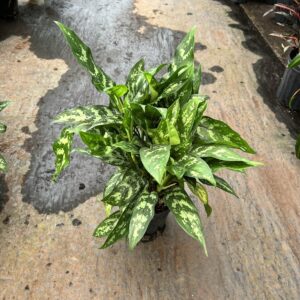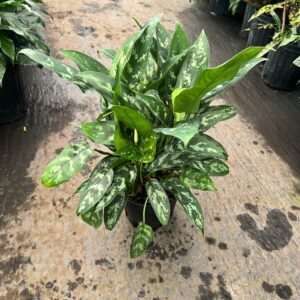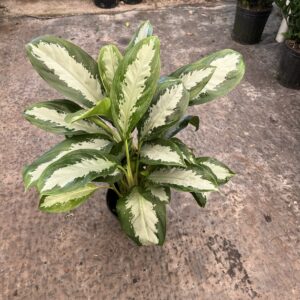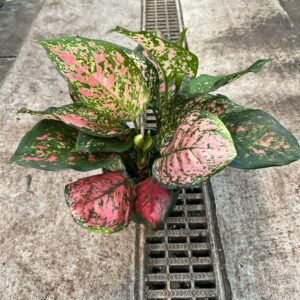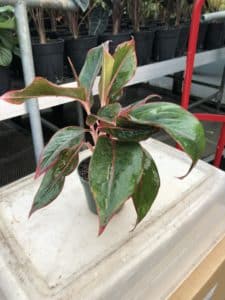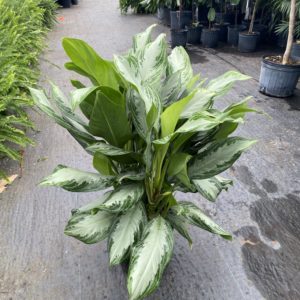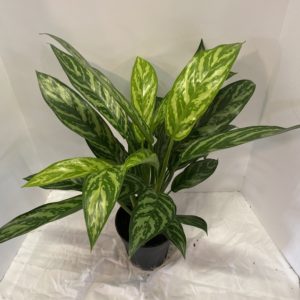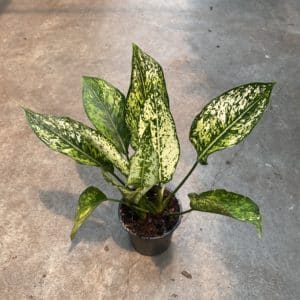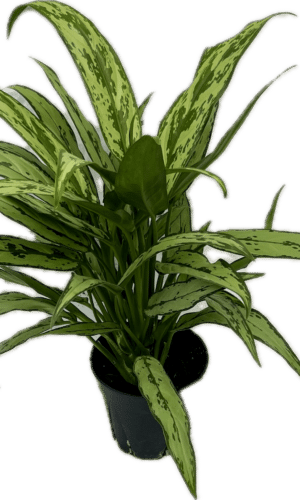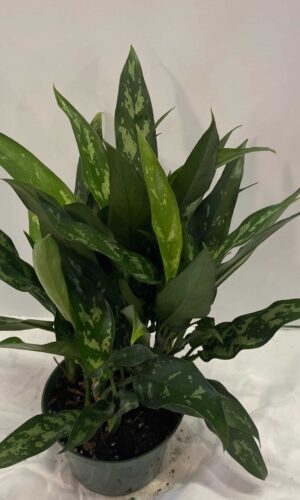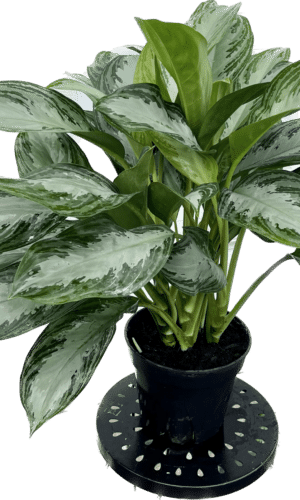Aglaonemas, the scientific name for Chinese Evergreen plants, are a hardy hybrid from the Aroid family and originally came from the subtropics of Southeast Asia. NASA lists the Chinese Evergreen as one of its top ten plants to clean the air of harmful toxins.
Chinese Evergreen plants are one of the few indoor plant with large, sometimes colorful, variegated leaves that can live in very low-light conditions. Aglaonemas will grow faster in a brighter light.
Allow the top 25-30% of the soil to dry out before watering. When the soil of a Chinese Evergreen plant is too wet, the stems become mushy and die. When the soil gets too dry or too wet, yellow leaves develop.
Temperatures below 50°F (10° C) may damage the leaves; keep a Chinese Evergreen plant away from cold winter drafts and air conditioners.
Chinese Evergreen plants do well in regular household humidity or higher.
Mealy Bugs, scale, and Aphids can rarely be an issue.
In very high humidity, the large leaves of a Chinese Evergreen plant may develop bacterial diseases such as Leaf Spot.
Keep a Chinese Evergreen a little root-bound in a small pot so that the soil can dry out quickly will help, do not re pot too early.
If a Chinese Evergreen plant becomes thin and leggy, prune the stems back to where they start to bend. The plant will branch out all along the length of the remaining stem.
